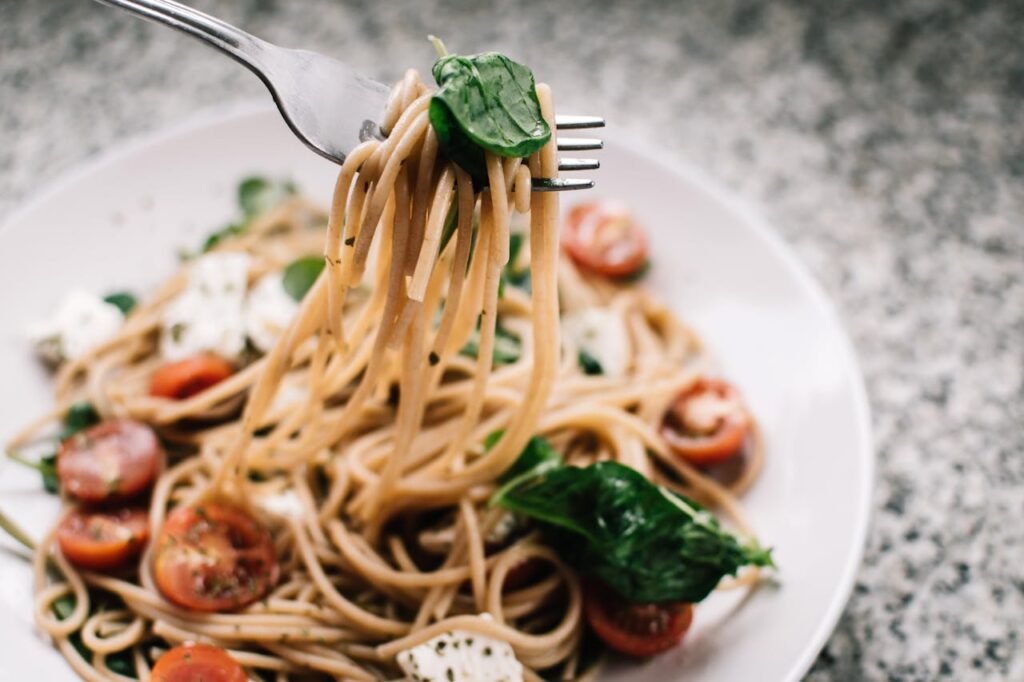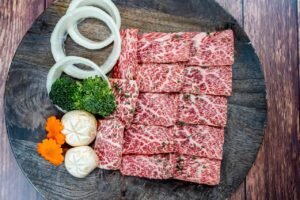
Ceıvır Ceıvır
Introduction to Ceıvır
Ceıvır is a traditional Turkish dish that embodies the rich culinary heritage of Turkey, renowned for its vibrant flavors and satisfying characteristics. This dish holds a significant place in Turkish gastronomy, offering both nourishment and a connection to cultural practices that have been passed down through generations. At its core, ceıvır showcases simple yet wholesome ingredients, typically involving a variety of vegetables, herbs, spices, and a protein source, all cooked together to create a harmonized taste experience.
The essence of ceıvır lies in its versatility; it can be adapted to accommodate different tastes and dietary preferences. This adaptability has contributed to its esteemed reputation among locals and visitors alike. As a point of reference, many consider ceıvır not only to be a meal but also a culinary symbol of Turkish hospitality, often shared among friends and family during gatherings or special occasions. The preparation of ceıvır is often viewed as an art form, where the cook’s skill can greatly influence the dish’s success, melding flavors and textures into a unified whole.
History and Origins of Ceıvır
Ceıvır, a traditional dish that reflects the rich culinary heritage of Turkey, has origins deeply rooted in the lifestyles of nomadic tribes and pastoral communities. The name “ceıvır” is derived from the Turkish verb “çevirmek,” meaning to turn or rotate, which ties back to the dish’s unique cooking method that involves turning the ingredients in a pan over a fire. This method has been passed down through generations, evolving alongside the cultural practices of those who prepared it.
The roots of ceıvır can be traced back several centuries, where it was primarily consumed by groups who depended on livestock and agriculture as their primary means of sustenance. These communities thrived in regions where both animal husbandry and farming were prevalent, leading to a dish that successfully combined the ingredients from both sectors. As nomadic tribes traveled, they carried with them the culinary traditions of ceıvır, which contributed to its widespread acceptance in various parts of Turkey.
As trade routes developed, particularly during the time of the Silk Road, ceıvır began to incorporate a broader range of ingredients inspired by interactions with other cultures. Spices, herbs, and cooking techniques from neighboring regions found their way into the traditional recipe, enhancing its flavor profile. Over time, the addition of vegetables and different types of meats further diversified the dish, reflecting the agricultural conditions and culinary preferences of specific areas.
In contemporary Turkey, ceıvır remains a popular dish that is often enjoyed in homes and at social gatherings. While the basic preparation has remained intact, modern variations can be found, showcasing regional differences and adaptations. By understanding the history and origins of ceıvır, we not only appreciate its flavor but also recognize the cultural significance it holds within the diverse tapestry of Turkish cuisine.
The Traditional Ingredients of Ceıvır
Ceıvır is a traditional Turkish dish known for its bold flavors and hearty components. The essence of ceıvır lies in its diverse and high-quality ingredients, which vary significantly across different regions of Turkey. One of the most critical elements in the preparation of ceıvır is the choice of vegetables. Local produce such as tomatoes, bell peppers, and eggplants are typically used, each contributing to the dish’s distinct taste. The freshness of these vegetables not only enhances the flavor profile but also reflects the agricultural richness of the region.
In addition to vegetables, the use of spices is paramount in crafting the authentic flavor of ceıvır. Common spices like cumin, paprika, and black pepper are often incorporated, providing depth and warmth. The careful balance of these spices is crucial as it complements the primary ingredients without overpowering them. Each region may have its own unique blend, giving ceıvır a personal touch that captures the essence of local culinary traditions.
Meat is another key ingredient in ceıvır, with lamb being the most favored choice due to its tender texture and rich flavor. When slow-cooked, lamb becomes succulent and infuses the entire dish with its aromatic qualities. Variations of ceıvır may also include beef or chicken, depending on local preferences and availability. Furthermore, some regions introduce variations in preparation methods, incorporating techniques such as grilling or stewing. This diversity not only showcases the adaptability of ceıvır but also highlights the regional identities across Turkey.
Ultimately, the combination of fresh local vegetables, assorted spices, and quality meats results in a dish that is both hearty and flavorful. These traditional ingredients embody the essence of ceıvır, making it a beloved culinary staple rich in culture and history.
Preparation Methods: Making Ceıvır
Ceıvır is a cherished traditional Turkish dish that reflects a rich culinary heritage, often prepared with a variety of techniques that have been handed down through generations. The preparation of ceıvır begins with the selection of high-quality ingredients. The key components include tender cuts of meat, fresh vegetables, and a carefully balanced mix of spices that enhance the dish’s flavor. Traditionally, lamb or beef is favored due to their tender texture and richness, but variations can include chicken or even vegetarian options, adapting ceıvır to diverse dietary preferences.
The culinary process commonly starts with marinating the meat. A mixture of yogurt, herbs, and spices is often used to tenderize the meat and infuse it with flavor. This step is crucial, as it allows the flavors to meld together, creating the depth for which ceıvır is known. After marination, the meat is seared in a hot pan to develop a rich, caramelized crust before being slow-cooked to tenderness. This cooking style emphasizes the traditional method of layering flavors, which is essential for making an authentic ceıvır.
The vegetables used in ceıvır, such as bell peppers, eggplants, and tomatoes, are usually diced and added to the dish at various stages, contributing to the complexity of the dish. Some families may opt to grill or roast these vegetables separately before adding them to the main pot, which enhances their flavor and adds a smoky aroma. Preserving these traditional techniques is vital as they honor the cultural significance of ceıvır, where each family might have unique recipes that reflect their particular regional influences.
Furthermore, ceıvır is frequently served with rice or bulgur, allowing the dish to be a centerpiece of any meal. Each preparation method not only brings a variety of textures and flavors but also sustains the culinary traditions of Turkey, ensuring that the legacy of ceıvır continues to thrive in modern kitchens.
Ceıvır: A Cultural Symbol
Ceıvır holds a unique position within Turkish culture, serving not merely as a dish but as a symbol of hospitality and community. This traditional meal is frequently prepared and served during significant gatherings, such as weddings, religious holidays, and family reunions. Its presence at these events is a testament to its role in fostering a sense of togetherness and celebration among participants. Guests are often treated to ceıvır as a way of expressing warmth and generosity, which are central values in Turkish societal norms.
Beyond its culinary appeal, ceıvır encapsulates the essence of Turkish identity through its connection to family traditions. Many households have their unique recipes passed down through generations, reflecting the regional variations and personal touches that contribute to the dish’s appeal. These variations highlight the adaptability of ceıvır, as it can be enjoyed in a variety of forms based on local ingredients and tastes, yet it retains its core significance as a family favorite.
Moreover, ceıvır serves to bridge generations, as younger family members learn the time-honored techniques and customs associated with its preparation. This not only keeps the tradition alive, but it also reinforces familial bonds. In many communities, the act of making ceıvır becomes a collaborative effort, where family and friends gather to share stories, laughter, and the joy of cooking together, embodying the essence of community spirit in Turkish culture.
Ultimately, ceıvır is more than just a dish; it is integral to the cultural fabric of Turkey. Its role in important life events and its representation of hospitality and familial ties make it a cherished part of Turkish social life. By understanding the cultural significance of ceıvır, one can appreciate how this traditional dish transcends mere sustenance, becoming a vital aspect of Turkey’s rich heritage.
Modern Twists on Traditional Ceıvır
In recent years, the culinary landscape has seen a fascinating evolution of traditional dishes, and ceıvır is no exception. This beloved Turkish dish, rooted in rich flavors and regional ingredients, has garnered attention from modern chefs and home cooks alike who seek to adapt its essence while introducing innovative elements. As a result, ceıvır has transcended its traditional boundaries, leading to new interpretations that honor its history while inviting contemporary tastes.
One notable modern adaptation involves blending international flavors with traditional ceıvır components. For instance, some contemporary recipes incorporate spices such as cumin or paprika, commonly used in Latin American cuisines, to enhance the flavor profile of ceıvır. Chefs might also experiment with different cooking methods, such as grilling or sous-vide, to create unique textures and flavors, providing a fresh take on this classic dish. By integrating global influences, the dish continues to evolve without losing its cultural significance.
Additionally, innovative ingredients are making their way into ceıvır recipes. Many home cooks are replacing the traditional meats with plant-based alternatives, catering to the growing demand for vegetarian and vegan options. These alternatives—such as lentils or jackfruit—are gently seasoned to maintain the dish’s original taste while offering a modern twist. Such adaptations not only make ceıvır more accessible but also highlight its versatility.
Furthermore, the rise of fusion cuisine has encouraged chefs to blend ceıvır with other culinary traditions. For example, incorporating elements of Asian cuisine can yield intriguing results, with additions such as soy sauce or ginger bringing new dimensions to the dish. As these creative interpretations of ceıvır flourish, they highlight the importance of cultural exchange in the culinary world, allowing traditional foods to thrive in a modern context.
Health Benefits of Ceıvır
Ceıvır is not only a delightful traditional Turkish dish, but it also offers several health benefits due to its nutritious ingredients. Typically made with an array of fresh vegetables and lean meats, ceıvır naturally promotes a balanced diet and helps in maintaining overall well-being. The inclusion of various fresh greens, peppers, and tomatoes in ceıvır contributes a variety of essential vitamins and minerals. For instance, vegetables like spinach and zucchini are packed with antioxidants that aid in the body’s fight against free radicals, reducing potential oxidative stress.
Moreover, lean meats such as chicken or beef, which can be incorporated into ceıvır, provide high-quality protein necessary for muscle repair and growth. Proteins are fundamental to the structure and function of every cell in the body, making them vital for maintaining a healthy lifestyle. When combined with wholesome vegetables, the nutritional profile of ceıvır is significantly enhanced, making it a hearty and satisfying meal.
One key element of preparing ceıvır is the emphasis on homemade cooking. By creating this dish at home, individuals can ensure the freshness and quality of the ingredients, which often equate to higher nutritional value. Home-cooked meals like ceıvır allow users to control what goes into their dishes, minimizing additives or preservatives that are frequently found in commercial or processed meals.
Incorporating ceıvır into regular meal planning is a great way to enjoy a flavorful dish while reaping the health benefits associated with its key ingredients. Overall, ceıvır serves as a versatile addition to a balanced diet, supporting both health and culinary enjoyment.
How to Enjoy Ceıvır
Ceıvır is a delightful Turkish dish that can be prepared in various ways to suit different palates. To fully appreciate this traditional meal, it is essential to understand the best practices for serving and enjoying it. One of the most popular methods of serving ceıvır is nestled in a warm, soft pita or flatbread. This allows diners to create their own wraps, enhancing the overall experience. A fresh side salad made with finely chopped tomatoes, cucumbers, and parsley complements ceıvır perfectly, adding a refreshing crunch and brightness to the meal.
When it comes to accompaniments, several side dishes can elevate the enjoyment of ceıvır. For instance, a dollop of yogurt, possibly seasoned with a hint of garlic or cucumber, can provide a cool contrast to the dish’s spices. Additionally, serving pickled vegetables alongside ceıvır adds tanginess and depth of flavor that enhances each bite. For those who like a little heat, chili sauce or a spice blend can be offered, providing an extra kick.
To create a memorable dining experience, consider hosting a ceıvır-themed meal with family and friends. Set the table with traditional Turkish décor, such as ornate plates and colorful fabrics, to immerse your guests in the culinary culture. Encourage guests to customize their own ceıvır wraps by providing an array of fillings and toppings. Pair the meal with a selection of beverages like Ayran, a yogurt-based drink, or a light Turkish red wine, which supports the rich flavors of ceıvır. Suitable desserts, such as baklava or Turkish delight, can round out the meal, leaving a lasting impression. Ultimately, enjoying ceıvır is about celebrating culinary traditions while creating warm social connections.
Conclusion: Embracing Ceıvır’s Legacy
Ceıvır stands as a remarkable testament to Turkey’s rich culinary heritage, embodying flavors and traditions that have been cherished for generations. This traditional dish is not merely sustenance but a cultural symbol that encapsulates the essence of Turkish hospitality and familial bonds. Through its preparation and sharing, ceıvır fosters unity and connection, allowing families and friends to come together in celebration of both food and community.
The process of making ceıvır is an art that reflects the creativity and resourcefulness of Turkish cuisine. With its diverse ingredients, ceıvır can often be tailored to individual tastes, showcasing the versatility of this cherished dish. From the juicy meats to the fragrant spices and fresh vegetables, every component plays a vital role in creating the symphony of flavors that defines ceıvır. Furthermore, the rich history behind ceıvır provides insight into Turkey’s agricultural practices and regional variations, illuminating the importance of local ingredients in traditional cooking.
As you explore ceıvır, you will not only indulge in a meal but also engage with Turkey’s cultural narrative. The dish invites you to appreciate the craftsmanship behind the cooking techniques, the significance of local produce, and the deep connections formed through shared meals. Whether you are a seasoned cook or a curious learner, ceıvır is a dish that offers a delightful culinary adventure.
In conclusion, embracing ceıvır’s legacy means inviting this vibrant culinary tradition into your home, allowing its flavors and history to enrich your dining experience. By preparing and enjoying ceıvır, you will experience a slice of Turkey’s culture, encouraging a greater appreciation for this extraordinary dish and the traditions surrounding it.

